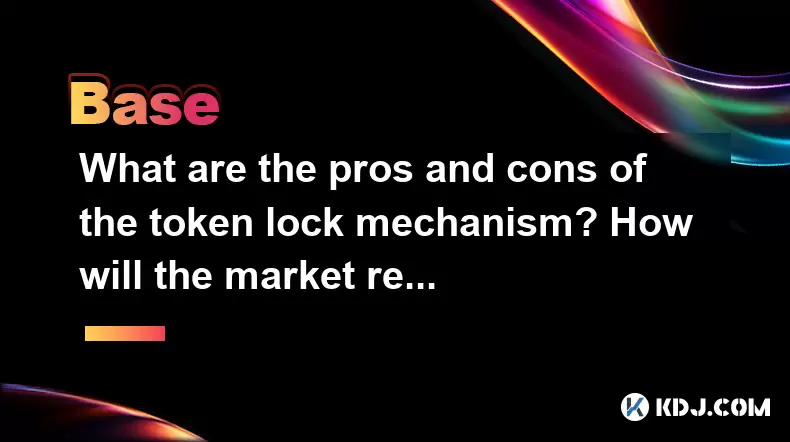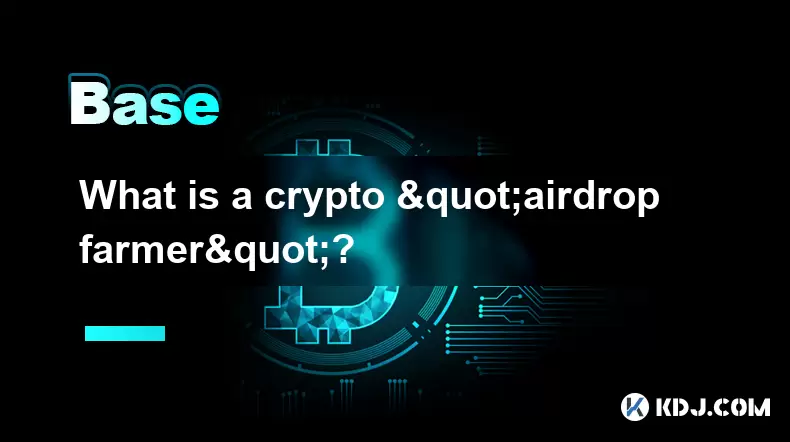-
 Bitcoin
Bitcoin $119800
1.38% -
 Ethereum
Ethereum $3873
3.25% -
 XRP
XRP $3.247
1.85% -
 Tether USDt
Tether USDt $1.001
0.02% -
 BNB
BNB $840.4
5.94% -
 Solana
Solana $190.0
2.55% -
 USDC
USDC $1.000
0.03% -
 Dogecoin
Dogecoin $0.2433
2.69% -
 TRON
TRON $0.3197
-0.05% -
 Cardano
Cardano $0.8367
1.39% -
 Sui
Sui $4.327
3.11% -
 Hyperliquid
Hyperliquid $44.00
0.31% -
 Stellar
Stellar $0.4461
1.76% -
 Chainlink
Chainlink $19.25
4.61% -
 Hedera
Hedera $0.2941
3.90% -
 Bitcoin Cash
Bitcoin Cash $598.4
6.89% -
 Avalanche
Avalanche $26.19
4.67% -
 Litecoin
Litecoin $115.1
0.50% -
 Shiba Inu
Shiba Inu $0.00001427
1.55% -
 Toncoin
Toncoin $3.379
2.01% -
 UNUS SED LEO
UNUS SED LEO $8.966
-0.16% -
 Ethena USDe
Ethena USDe $1.001
0.02% -
 Uniswap
Uniswap $11.04
4.16% -
 Polkadot
Polkadot $4.239
2.00% -
 Monero
Monero $324.6
0.36% -
 Bitget Token
Bitget Token $4.672
2.46% -
 Pepe
Pepe $0.00001294
2.69% -
 Dai
Dai $0.0000
0.01% -
 Cronos
Cronos $0.1443
2.71% -
 Aave
Aave $302.9
1.98%
What are the pros and cons of the token lock mechanism? How will the market react after unlocking?
Token lock mechanisms stabilize prices and encourage long-term investment, but unlocking can cause liquidity issues and market volatility if not managed well.
May 11, 2025 at 02:00 am

The token lock mechanism is a common practice in the cryptocurrency industry, designed to stabilize token prices and encourage long-term investment. This article will explore the pros and cons of the token lock mechanism and discuss how the market might react after unlocking.
Benefits of the Token Lock Mechanism
The token lock mechanism offers several advantages to both the project team and investors. One of the primary benefits is price stabilization. By locking a portion of the tokens, the circulating supply is reduced, which can help maintain or increase the token's value. This is particularly important during the initial stages of a project when the market is still assessing its potential.
Another significant advantage is encouraging long-term investment. When tokens are locked, investors are more likely to hold onto their assets rather than selling them immediately for quick profits. This can lead to a more stable investor base and a healthier ecosystem for the project. Long-term investors are often more committed to the project's success and can provide valuable feedback and support.
Team commitment is also enhanced through the token lock mechanism. When team members have their tokens locked, it aligns their interests with those of the investors. This can foster a sense of responsibility and dedication to the project's long-term goals, as team members are incentivized to work towards increasing the token's value over time.
Drawbacks of the Token Lock Mechanism
Despite its benefits, the token lock mechanism also has several drawbacks. One of the main concerns is potential liquidity issues. When a significant portion of the tokens is locked, it can lead to reduced liquidity in the market. This can make it more difficult for investors to buy or sell tokens, potentially affecting the token's price and market dynamics.
Another disadvantage is the risk of market manipulation. If a large number of tokens are unlocked at once, it can lead to a sudden increase in supply, which may cause the token's price to drop. This can be particularly problematic if the unlocking is not well-managed or if there is a lack of transparency about the unlocking schedule.
Investor uncertainty is another potential issue. The anticipation of token unlocking can create uncertainty among investors, leading to increased volatility in the market. Investors may be hesitant to invest in a project if they are unsure about the impact of the unlocking on the token's value.
Market Reaction After Unlocking
The market's reaction to token unlocking can vary depending on several factors. The timing and size of the unlock play a crucial role. If a large number of tokens are unlocked at once, it can lead to a significant increase in supply, potentially causing the token's price to drop. Conversely, if the unlocking is staggered over time, it may have a less dramatic impact on the market.
Market sentiment is another important factor. If investors have confidence in the project and its long-term potential, they may be less likely to sell their tokens immediately after unlocking. This can help mitigate the impact of the increased supply on the token's price.
The project's performance also influences the market's reaction. If the project has made significant progress and achieved its milestones, investors may be more inclined to hold onto their tokens, even after unlocking. On the other hand, if the project has underperformed, investors may be more likely to sell their tokens, leading to increased selling pressure.
Strategies for Managing Token Unlocking
To minimize the potential negative impact of token unlocking, projects can implement various strategies. One approach is to stagger the unlocking over a period of time rather than releasing all tokens at once. This can help spread out the increase in supply and reduce the risk of a sudden price drop.
Another strategy is to communicate clearly with investors about the unlocking schedule and the project's plans. Transparency can help build trust and reduce uncertainty among investors, potentially leading to a more stable market reaction.
Incentivizing long-term holding is another effective strategy. Projects can offer rewards or benefits to investors who hold their tokens for an extended period after unlocking. This can encourage investors to remain committed to the project and reduce the likelihood of immediate selling.
Case Studies of Token Unlocking
Examining real-world examples can provide valuable insights into the impact of token unlocking on the market. One notable case is the unlocking of tokens for the cryptocurrency project XYZ. When XYZ unlocked a significant portion of its tokens, the market initially reacted with a sharp price drop due to the increased supply. However, the project had implemented a staggered unlocking schedule and communicated clearly with investors, which helped mitigate the impact over time.
Another example is the project ABC, which experienced a more positive market reaction after unlocking. ABC had made significant progress in its development and had a strong community of long-term investors. As a result, the unlocking had a minimal impact on the token's price, and the market remained relatively stable.
Frequently Asked Questions
Q: How can investors prepare for token unlocking?
A: Investors can prepare for token unlocking by staying informed about the project's unlocking schedule and understanding the potential impact on the token's price. They should also consider their investment goals and risk tolerance, and may want to diversify their portfolio to mitigate potential risks.
Q: What role does regulatory compliance play in token locking and unlocking?
A: Regulatory compliance is crucial in the cryptocurrency industry, and projects must ensure that their token locking and unlocking mechanisms comply with relevant regulations. This can help build trust with investors and reduce the risk of legal issues that could impact the project's success.
Q: Can token locking and unlocking affect the project's development timeline?
A: Yes, token locking and unlocking can influence the project's development timeline. If a project relies on the funds from unlocked tokens to finance its development, the timing of the unlocking can impact the availability of resources and the pace of development. Projects should carefully plan their unlocking schedules to align with their development milestones.
Disclaimer:info@kdj.com
The information provided is not trading advice. kdj.com does not assume any responsibility for any investments made based on the information provided in this article. Cryptocurrencies are highly volatile and it is highly recommended that you invest with caution after thorough research!
If you believe that the content used on this website infringes your copyright, please contact us immediately (info@kdj.com) and we will delete it promptly.
- Bitcoin's Potential Final Rally: Decoding Historical Data and Future Projections
- 2025-07-28 06:30:11
- BlockDAG, XRP, and Utility-Driven Growth: A New Era for Crypto?
- 2025-07-28 06:30:11
- Litecoin's ADX Crossover: Rally Potential or False Dawn?
- 2025-07-28 06:50:11
- Arctic Pablo Coin: Meme Coin Mania and Presale Buzz in 2025
- 2025-07-28 06:50:11
- Arctic Pablo: Meme Coin Mania or ROI Rocket?
- 2025-07-28 06:55:11
- Worldcoin's Wild Ride: Uptrend Battles Resistance Amidst Regulatory Waves
- 2025-07-28 07:00:12
Related knowledge

What is the difference between CeFi and DeFi?
Jul 22,2025 at 12:28am
Understanding CeFi and DeFiIn the world of cryptocurrency, CeFi (Centralized Finance) and DeFi (Decentralized Finance) represent two distinct financia...

How to qualify for potential crypto airdrops?
Jul 23,2025 at 06:49am
Understanding What Crypto Airdrops AreCrypto airdrops refer to the distribution of free tokens or coins to a large number of wallet addresses, often u...

What is a crypto "airdrop farmer"?
Jul 24,2025 at 10:22pm
Understanding the Role of a Crypto 'Airdrop Farmer'A crypto 'airdrop farmer' refers to an individual who actively participates in cryptocurrency airdr...

What is the difference between a sidechain and a Layer 2?
Jul 20,2025 at 11:35pm
Understanding the Concept of SidechainsA sidechain is a separate blockchain that runs parallel to the main blockchain, typically the mainnet of a cryp...

What is the Inter-Blockchain Communication Protocol (IBC)?
Jul 19,2025 at 10:43am
Understanding the Inter-Blockchain Communication Protocol (IBC)The Inter-Blockchain Communication Protocol (IBC) is a cross-chain communication protoc...

How does sharding improve scalability?
Jul 20,2025 at 01:21am
Understanding Sharding in BlockchainSharding is a database partitioning technique that is increasingly being adopted in blockchain technology to enhan...

What is the difference between CeFi and DeFi?
Jul 22,2025 at 12:28am
Understanding CeFi and DeFiIn the world of cryptocurrency, CeFi (Centralized Finance) and DeFi (Decentralized Finance) represent two distinct financia...

How to qualify for potential crypto airdrops?
Jul 23,2025 at 06:49am
Understanding What Crypto Airdrops AreCrypto airdrops refer to the distribution of free tokens or coins to a large number of wallet addresses, often u...

What is a crypto "airdrop farmer"?
Jul 24,2025 at 10:22pm
Understanding the Role of a Crypto 'Airdrop Farmer'A crypto 'airdrop farmer' refers to an individual who actively participates in cryptocurrency airdr...

What is the difference between a sidechain and a Layer 2?
Jul 20,2025 at 11:35pm
Understanding the Concept of SidechainsA sidechain is a separate blockchain that runs parallel to the main blockchain, typically the mainnet of a cryp...

What is the Inter-Blockchain Communication Protocol (IBC)?
Jul 19,2025 at 10:43am
Understanding the Inter-Blockchain Communication Protocol (IBC)The Inter-Blockchain Communication Protocol (IBC) is a cross-chain communication protoc...

How does sharding improve scalability?
Jul 20,2025 at 01:21am
Understanding Sharding in BlockchainSharding is a database partitioning technique that is increasingly being adopted in blockchain technology to enhan...
See all articles

























































































